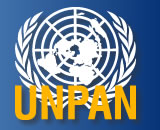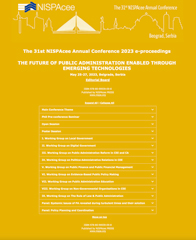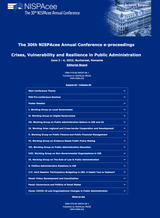(NSM), was inspired by local government modernization in the Netherlands, more precisely by the city of Tilburg (see Banner 1991; Hendriks and Tops 1999; Reichard 2003). Pushed ahead by the KGSt,4 the New Steering Model spread through the German local landscape like a bushfire (Banner 2006a; Reichard 1994; Wollmann 2003a). It very quickly became the predominant template for public sector modernization, not only at the local but – although hesitatingly – also at the Länder level and – to some extent – at the federal level of government (see Jann 2003; Jann and Reichard 2003). Contrary to other European countries, public management reforms in Germany must be understood in terms of a bottom-up movement that has been driven primarily by local “entrepreneurs,” whereas the federal and most of the Länder governments have for a long time been reluctant to implement these reforms (see Klages and Löffler 1996: 134–136).
However, research on the effects and impacts of these reform initiatives has largely been missing so far. Empirical studies on the issue have been primarily concerned with the implementation process and the institutional changes caused by modernization efforts (see Banner 2006a: 129). Yet the question of how these new institutional structures and steering instruments are actually influencing administrative performance, decision making, and behavior remains understudied, as systematic and nationwide evaluations of the NSM reform agenda in Germany are lacking. The findings presented here will provide empirical evidence for these evaluative questions, drawing on a broad database that was obtained from a research project conducted by the authors between 2004 and 2006.5 The objective is to assess and explain the results and impacts of local public management reforms after more than 10 years of modernization in Germany.
Compared to the international reform movement, the NPM agenda was taken up relatively late in Germany (Reichard 2003: 349; Wollmann 2000: 923–925), which stands in contrast not only to the Anglo-Saxon world (see Halligan 2003; Hood 1991) but also to other Continental European countries, such as France (Kuhlmann 2008; Wollmann 2004). Only with the increasing budgetary and economic problems at the beginning of the 1990s could the managerial model of the NSM gain a foothold, not least following a broad diffusion campaign by the KGSt (Banner 2006a: 127–129; Wollmann 2001: 160–162). It promised more efficiency, effectiveness and customer orientation. At the same time, the NSM forwent discussion of outsourcing and privatization, which had noticeably improved the cognitive preconditions for a political reform consensus. Without going into the details, the main elements of the NSM are shown in figure 1. They constitute the conceptual framework of the evaluation pursued here.




 Price:
Price: 








